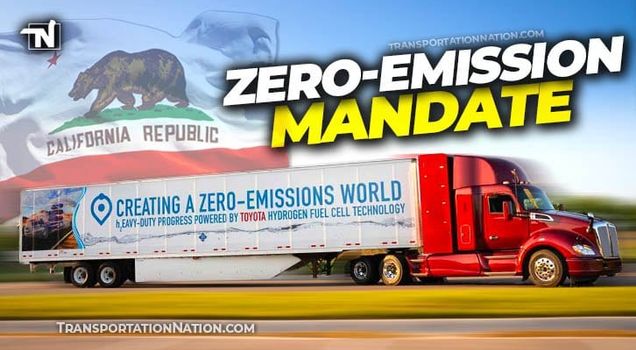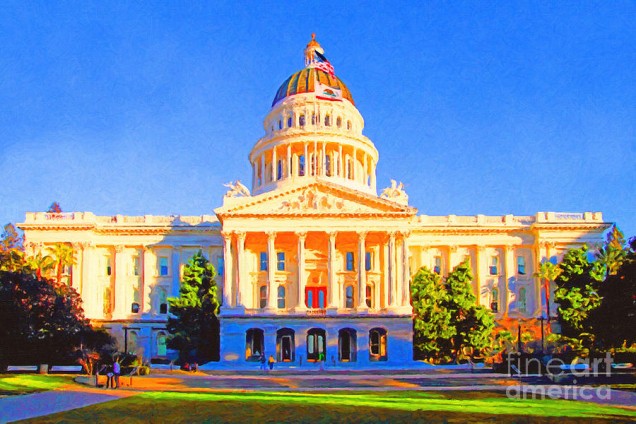Category: Environmental Law
The Push and Pull of Municipal Fossil Fuel Bans in Massachusetts
In 2019, Brookline, Massachusetts became the first municipality outside of California to ban fossil fuels in new construction. The move was part of a growing movement among cities and towns to ban fossil fuel infrastructure, such as hookups for oil or natural gas use, in newly constructed buildings. Fossil fuel bans of this nature typically aim to curb emissions from energy use in buildings, which in many municipalities is the leading source of emissions, through electrification. Electricity use in buildings produces less carbon emissions than burning oil and gas directly and those emissions will continue to decrease as more renewable resources are added to the electricity grid.
 Unfortunately for Brookline, the Attorney General’s Municipal Law Unit disapproved of Brookline’s fossil fuel ban in 2020, finding that the ban was preempted by state law. Not easily deterred, Brookline passed a new set of by-laws in 2021. These by-laws were worded differently than the first attempt, framed as requirements for building permits rather than an outright ban. However, these by-laws fared no better than the first ban, and the Attorney General issued a decision in 2022 once again disapproving of the by-law amendments because they were preempted by Chapter 40A (regulating municipal zoning), Chapter 164 (regulating natural gas), and the State Building Code.
Unfortunately for Brookline, the Attorney General’s Municipal Law Unit disapproved of Brookline’s fossil fuel ban in 2020, finding that the ban was preempted by state law. Not easily deterred, Brookline passed a new set of by-laws in 2021. These by-laws were worded differently than the first attempt, framed as requirements for building permits rather than an outright ban. However, these by-laws fared no better than the first ban, and the Attorney General issued a decision in 2022 once again disapproving of the by-law amendments because they were preempted by Chapter 40A (regulating municipal zoning), Chapter 164 (regulating natural gas), and the State Building Code.
Meanwhile, in the time between when Brookline passed its first fossil fuel ban and when the Attorney General issued its decision about the legality of the second ban, dozens of other Massachusetts municipalities became interested in enacting fossil fuel bans of their own. Some of these municipalities submitted home rule petitions to the Massachusetts legislature, asking the legislature to grant their individual municipalities the authority to ban fossil fuel infrastructure on a case-by-case basis. State Representative Tami Gouveia and State Senator Jamie Eldridge of Acton also introduced a bill during the 2021–2022 session that would have granted every municipality in the commonwealth the power to adopt a requirement for all-electric construction without passing and submitting a home rule petition.
The result was a compromise: The legislature passed An Act Driving Clean Energy and Offshore Wind in August of 2022. The law, among other things, authorized a pilot program enabling up to ten cities and towns to adopt and amend ordinances or by-laws to require new building construction or major renovation projects to be fossil fuel-free. The Massachusetts Department of Energy Resources (DOER) was tasked with developing the pilot program and deciding which municipalities would participate. Among requirements for cities and towns seeking to join the pilot program for fossil fuel bans is having a minimum of ten percent affordable housing.
DOER has already received more than ten applications from Massachusetts cities and towns wishing to join the pilot program, but under the draft regulations DOER published in February of this year, municipalities would have to wait until early 2024 at the earliest to implement their bans. This long period for implementation has disturbed members of the legislature who championed and passed the pilot program into law. Senator Michael Barrett, the Senate Chair of the Joint Committee on Telecommunications, Utilities and Energy recently told GBH News that the proposal would “delay the entire process much longer than the Legislature ever imagined.” Pressure from both the legislature and the municipalities seeking to join the pilot program will likely continue to mount as the group of cities and towns now includes the City of Boston, the largest city in the commonwealth. With advocacy groups concerned that the delay combined with limiting the pilot program to ten municipalities will hold the commonwealth back from meeting its goal of reaching net zero carbon emissions by 2050, legislators may be reconsidering the more conservative approach they took by passing the pilot program rather than blanket approval for cities and towns to enact fossil fuel bans.
Opponents and those concerned about the impacts of fossil fuel bans, however, may be heartened by the delay. Governor Charlie Baker considered vetoing the energy bill because of the fossil fuel ban pilot program because of the possibility that banning fossil fuels in new construction might make it more difficult to build affordable housing. In a state experiencing what many characterize as an affordable housing crisis, this concern is not uncommon, the thought process being that if there is inconsistency in requirements for developers between municipalities, developers, especially developers of affordable housing, will prioritize projects in communities with fewer or less expensive requirements. Many of the cities and towns that have already stepped forward to join the pilot program are fairly wealthy and may not be as concerned with the affect of a fossil fuel ban on the costs of housing development.
 Yet, there may still be reason for optimism. As an example of what may be possible in a future that includes municipal fossil fuel bans, the Town of Brookline recently approved an affordable housing project that will be powered exclusively by electricity. In addition, Boston Mayor Michelle Wu recently signed an executive order that bans fossil fuel use in new city-owned buildings and in major renovations of municipal buildings. Even without municipal fossil fuel bans in place, some developers, including affordable housing developers, in Massachusetts communities are choosing to build fossil fuel-free.
Yet, there may still be reason for optimism. As an example of what may be possible in a future that includes municipal fossil fuel bans, the Town of Brookline recently approved an affordable housing project that will be powered exclusively by electricity. In addition, Boston Mayor Michelle Wu recently signed an executive order that bans fossil fuel use in new city-owned buildings and in major renovations of municipal buildings. Even without municipal fossil fuel bans in place, some developers, including affordable housing developers, in Massachusetts communities are choosing to build fossil fuel-free.
The future of fossil fuel-free building in Massachusetts is uncertain. The legislature may choose to take a more aggressive approach than it did during the last session, or it may wait to see how DOER’s implementation of the pilot program goes, leaving Massachusetts cities and towns and developers to continue to innovate on their own. States are often called “laboratories of democracy,” but when it comes to issues like climate change, where municipalities acting individually may be able to make a large impact, that label may better suit cities and towns as they try again and again to form creative solutions where their state legislatures fall short.
 Hayley Kallfelz graduated with a juris doctor from Boston University School of Law in May 2023.
Hayley Kallfelz graduated with a juris doctor from Boston University School of Law in May 2023.
Congestion Pricing: Addressing The True Cost of Cars
One of the most heartening social trends of the last couple of years has been a recognition of the true costs of car use in cities. Whether approaching it from the stance of climate change, health effects from air quality, physical safety on the roads, or social fragmentation from structures that isolate and alienate people, it has become increasingly clear that we do not properly value our roads. One policy with great potential to address all these concerns, while generating considerable revenue that could support mass transit in cities, is congestion pricing of key roads in urban centers.
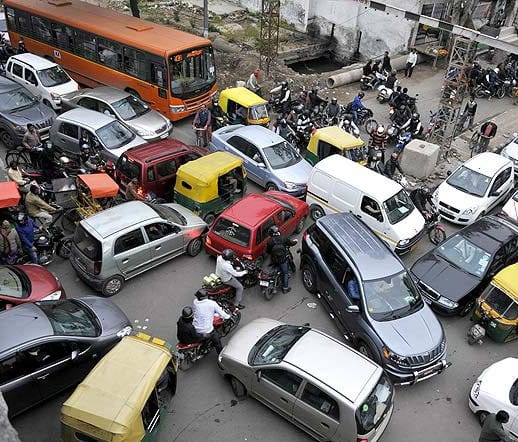 The idea behind congestion pricing is that roadways are incredibly valuable real estate, which people do not pay to use (outside of some tolling on bridges and specific toll roads). The free use of the roads imposes significant social costs on the city's inhabitants through bumper-to-bumper traffic, costing people time, and polluting the air. A congestion pricing system would impose a toll on entrants to designated zones. This would reduce traffic by imposing the true costs of using the road, and hopefully, diverting people to use mass transit or other forms of transportation. The beneficial effects would range from clearing congestion, to reducing air pollution, to generating significant revenue for the city.
The idea behind congestion pricing is that roadways are incredibly valuable real estate, which people do not pay to use (outside of some tolling on bridges and specific toll roads). The free use of the roads imposes significant social costs on the city's inhabitants through bumper-to-bumper traffic, costing people time, and polluting the air. A congestion pricing system would impose a toll on entrants to designated zones. This would reduce traffic by imposing the true costs of using the road, and hopefully, diverting people to use mass transit or other forms of transportation. The beneficial effects would range from clearing congestion, to reducing air pollution, to generating significant revenue for the city.
This is no longer merely a thought experiment either. Notably, cities including London, Stockholm, and Singapore, have all implemented congestion pricing in their city centers to great positive effect. They generally see reduced car congestion, but also interestingly, greater total numbers of people accessing the city, as they come in via alternate methods. This increases economic value to the city without imposing any of the normal car related costs.
No American city has successfully implemented this policy yet, but New York is currently in the middle of a now 5 year long battle to try. In 2019, the New York State legislature passed, in the state budget, a law permitting the city of New York to implement a congestion pricing plan. Curiously, New York City does not control its own road system, and is therefore dependent on the state to give permission to implement such a project. This is relatively common in the U.S. and is in tension with the age-old principle of local control. It also raises a potential problem where a star city in a state drives a significant portion of that state’s revenue, but has strong political disagreements with the state government. In New York the success of the plan at the state level was over 50 years in the making. New York State had frequently prevented the city from implementing similar congestion pricing programs in the past, when the city had tried to reduce traffic.
Despite state approval, congestion pricing in New York has been stuck in limbo, in part due to federal law. Title 23 of the Federal Code prohibits municipalities from imposing tolls on roads constructed or maintained with federal funding, which include several New York City roads. To impose tolls, New York had to enlist in the Federal Highway Administration's Value Pricing Pilot Program (VPPP), which gives up to 15 cities or states special permission to experiment with toll related projects on federally funded roads. Congestion pricing plan falls under the purview of the National Environmental Protection Act (NEPA) because it is enrolled in the VPPP.
Passed in 1970, NEPA mandates environmental review of federal projects. While proponents argue that NEPA is an essential defense for the environment from human exploitation (both for its own sake and also to protect our habitat), critics traditionally argue it prevents profitable projects. Now environmentally minded advocates are increasingly frustrated with NEPA’s requirements. They argue NEPA’s onerous procedural requirements, which often require millions of dollars and years of effort, are inhibiting projects that would benefit the environment, violating its fundamental purpose.
 It is clearly the case in New York right now that the city is suffering from these unnecessary delays. It took 2 full years just for the federal government to determine whether the appropriate environmental review was a relatively basic Environmental Assessment, or a complete Environmental Impact Assessment for the project and another 2 years to issue the determination report. Now, going on 5 years from initial passage, the city is still waiting for a final determination if the project is viable. All of this for a project that requires the city to build almost no physical infrastructure, and would dramatically reduce emissions and air pollution by reducing the number of cars driving in New York.
It is clearly the case in New York right now that the city is suffering from these unnecessary delays. It took 2 full years just for the federal government to determine whether the appropriate environmental review was a relatively basic Environmental Assessment, or a complete Environmental Impact Assessment for the project and another 2 years to issue the determination report. Now, going on 5 years from initial passage, the city is still waiting for a final determination if the project is viable. All of this for a project that requires the city to build almost no physical infrastructure, and would dramatically reduce emissions and air pollution by reducing the number of cars driving in New York.
The FHWA can remedy this issue by assigning congestion pricing projects a Categorical Exclusion (CE). A CE is used for projects that are known not to have negative environmental impacts. It exempts them from the entire Environmental Impact Statement and Environmental Assessment process. It is commonly used in projects where there will not be significant physical infrastructure created, much like the congest program. The programs would still have to present reasons why they should be granted the exclusion, so this will not totally eliminate any environmental review, but it will bring the level of review in line with the risks that the project actually presents.
New York’s experience shows the complex thicket of legislation and regulation that creative environmentalists must navigate in order to successfully pursue valuable projects. Congestion pricing is a perfect example because it is so cheap to implement, the primary difficulty should be political, in getting state legislatures to pass laws giving permission for cities to enact it. More American cities including San Francisco, Los Angeles, and Seattle have shown interest but have shown extreme caution in part because they know how difficult the implementation will be. Instead of trusting legislators and representatives to work on behalf of city residents, needlessly complex and blunt regulations are stepping in the way and forcing us to continue to choke cities in idling car fumes.
 Peter Kaplan anticipates graduating from Boston University School of Law in May 2024.
Peter Kaplan anticipates graduating from Boston University School of Law in May 2024.
US Policy Options for the No-Longer-Imaginary “Climate Refugee”
Rising sea levels, intense hurricanes, and dangerous flooding can cause sudden upheavals of individuals’ lives, making homes and entire areas uninhabitable for families or entire communities – sometimes, very suddenly. These “climate refugees” are often spoken in future terms, but they already exist; but the law in most places does not differentiate them from economic migrants who are seeking better jobs and living conditions. Governments, including the United States, have not redefined “refugees” to include those fleeing natural disaster, let alone climate change. The US should begin to rethink the concept of a refugee and put in place protections for those displaced by climate change.
 The United Nations Refugee Convention set the definition for a refugee in 1951: someone outside their country of nationality or residence with a well-founded fear of persecution on the basis of race, religion, nationality, membership of a particular social group or political opinion, without the ability to seek protection in that country. Meeting this criteria entitles one to international protections such as non-refoulement: the practice of avoiding forcing refugees to return to countries where they have a high risk of persecution. The definition of a refugee rests wholly on persecution and makes no mention of natural disaster or climate-related factors.
The United Nations Refugee Convention set the definition for a refugee in 1951: someone outside their country of nationality or residence with a well-founded fear of persecution on the basis of race, religion, nationality, membership of a particular social group or political opinion, without the ability to seek protection in that country. Meeting this criteria entitles one to international protections such as non-refoulement: the practice of avoiding forcing refugees to return to countries where they have a high risk of persecution. The definition of a refugee rests wholly on persecution and makes no mention of natural disaster or climate-related factors.
One major complication that arises from climate refugee policy is that it is very unlikely that one dramatic event will push a family out of its home country. Rather, ongoing drought and extreme heat due to climate change result in unsustainable conditions in which families cannot make a living or gain meaningful quality of life. Drought may cause crops to fail, and a family may be forced to move somewhere where they need not depend on farming. This makes it difficult to distinguish between those relocating to new countries due to climate change versus pure economic factors, and these individuals are deemed “economic migrants” no matter the root cause of their flight.
Another factor is the lack of incentive for national governments to go beyond the minimum requirements for refugee status set long ago in the UN Convention, despite the worsening natural disasters and living conditions due to climate change. In 2018, a majority of the UN General Assembly affirmed the Global Compact on Refugees, which strives toward addressing the interactions between climate, environmental degradation, and disasters, and refugee movements; this is not a binding agreement that alters the original 1951 Convention, however, and it tends to focus only on instances where climate change causes conflict and persecution (entitling one to classic refugee protections) rather than threats to life due to rising temperatures.
Climate refugees already exist. Kiribati is a South Pacific island nation that is in danger of losing its entire landmass to rising sea levels due to climate change. In 2015, a Kiribati national, Ioane Teitiota, applied for “climate refugee” status with the New Zealand government, but this application was rejected and he was repatriated to Kiribati. A subsequent complaint with the UN resulted in the New Zealand government’s decision being upheld due to a lack of “imminent threat” to life, though the UN did acknowledge the serious threat to the human right to life posed by climate change. Since then, New Zealand has pledged to offer up to 100 special climate refugee visas to Pacific Islanders in the future.
Mr. Teitiota's application would have gotten the same result with almost any national government, including the United States. National governments have largely matched their own domestic refugee policy to the 1951 UN definition and have avoided changing it since the treaty was signed over 70 years ago. The U.S. Citizenship and Immigration Services (USCIS) Refugee Eligibility criteria match this definition, as does the legal definition of “refugee” in the Immigration and Nationality Act enacted in 1952. USCIS explicitly states that “If you are fleeing a civil war or natural disaster, you may not be eligible for resettlement under U.S. law. However, you may fall within the protection of the United Nations High Commissioner for Refugees (UNHCR).” While “natural disaster” could mean climate change, the UHNCR states that “climate refugees” may only meet the definition of a refugee and be eligible for the associated protections when the “adverse effects of climate change interact with armed conflict and violence.” The UNHCR expressly does not endorse the term “climate refugee,” but rather “persons displaced in the context of disasters and climate change.” This leaves those displaced by climate change without refugee protection from either USCIS or UNHCR.
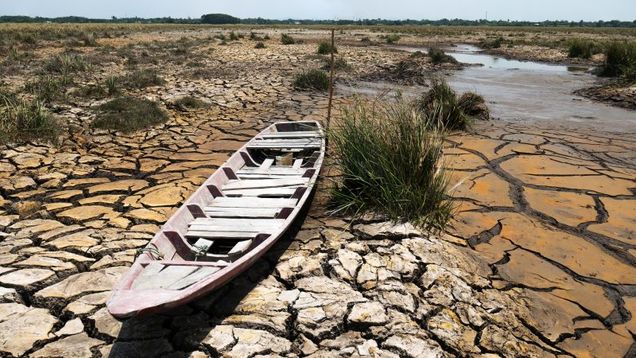 Congress has not frequently passed dramatic changes to U.S. immigration law; arguably, the last major legislation was during the Reagan administration in 1986, when Congress passed the Immigration Reform and Control Act making it a criminal offense for employers to hire undocumented migrants, offering legal status to some undocumented migrants who had been in the U.S. before 1982, and increasing security-based deterrence measures at the southern border. Clearly, this deterrence approach did not work, and each president since then has reckoned with issues of immigration, resulting in disjointed, easy-come-easy-go executive policy made up of executive orders and administrative measures under sitting presidents. Shortly after taking office, President Biden issued an executive order with the goal of starting the process to reorganize the U.S. refugee resettlement program to allow “climate refugees” by ordering an interagency report. This report highlighted the lack of climate change refugee resettlement channels, but offered the possibility of granting case-by-case parole for climate affected individuals as a short-term solution. Additionally, the report cited measures by other countries, such as humanitarian visas, labor mobility schemes, and education programs or sponsorships accessible to refugees and other forcibly displaced persons, which provide a path to permanent residency. None of these are long-term policy solutions, but rather seek to squeeze climate refugees into existing policy in any way they may fit. Even if the Biden administration does continue these efforts to protect climate refugees, these measures are easily undone by subsequent administrations.
Congress has not frequently passed dramatic changes to U.S. immigration law; arguably, the last major legislation was during the Reagan administration in 1986, when Congress passed the Immigration Reform and Control Act making it a criminal offense for employers to hire undocumented migrants, offering legal status to some undocumented migrants who had been in the U.S. before 1982, and increasing security-based deterrence measures at the southern border. Clearly, this deterrence approach did not work, and each president since then has reckoned with issues of immigration, resulting in disjointed, easy-come-easy-go executive policy made up of executive orders and administrative measures under sitting presidents. Shortly after taking office, President Biden issued an executive order with the goal of starting the process to reorganize the U.S. refugee resettlement program to allow “climate refugees” by ordering an interagency report. This report highlighted the lack of climate change refugee resettlement channels, but offered the possibility of granting case-by-case parole for climate affected individuals as a short-term solution. Additionally, the report cited measures by other countries, such as humanitarian visas, labor mobility schemes, and education programs or sponsorships accessible to refugees and other forcibly displaced persons, which provide a path to permanent residency. None of these are long-term policy solutions, but rather seek to squeeze climate refugees into existing policy in any way they may fit. Even if the Biden administration does continue these efforts to protect climate refugees, these measures are easily undone by subsequent administrations.
A number of policy options are available to the United States to rectify the absence of protections for climate refugees. In addition to parole or humanitarian visas, the U.S. could, as it has done before, instruct agencies to grant refugee status even when an individual does not strictly meet the definition of a “refugee.” The most common criteria disregarded under these conditions is the requirement that one be outside their country of origin. This adjustment could be very beneficial to climate refugees. Agencies could also stretch the meaning of existing “persecution” based definitions to somehow include climate change, though this may be limited to situations where drought, natural disaster, and other factors lead to actual conflict.
The most long-term solution would be the first sweeping immigration legislation to be passed since Reagan: a change to the legal definition of a “refugee” set out under the 1952 Immigration and Nationality Act to one that includes climate change, or specifically sets out a definition of “climate refugee.” Such a piece of legislation goes beyond the UN Covenant, so the United States and other UN members currently lack incentives to initiate it, but sadly incentives may change globally as climate refugees grow in numbers due to worsening conditions.
 Carly Gillingham anticipates graduating from Boston University School of Law in May 2022.
Carly Gillingham anticipates graduating from Boston University School of Law in May 2022.
We Need to Take Plastic Regulation More Seriously: Plastics as a Major Climate Change Contributor
Plastics are commonplace in modern society, despite increasing awareness of their negative environmental impacts. It is evident that plastic pollution litters our oceans and greenery, with devastating effects on natural ecosystems. Yet, the poor disposal of plastics is only part of the story—the production and management of plastics are incredible climate change contributors. Governmental action, however, has primarily focused on regulating the consumer and mitigating the impacts of plastics after use. Given the increasing urgency of climate change, it is time for the government to take the harm of plastics more seriously and regulate its production as the serious climate contributor it is.
The Plastic Problem
 Every year, between five hundred billion and one trillion plastic bags are used worldwide. (Jennie Reilly Romer, Comment: The Evolution of San Francisco’s Plastic-Bag Ban, 1 Golden Gate Univ. Envtl. L. J. 439, 439 (2007).) The average lifespan of a plastic bag is only twelve minutes. (Travis P. Wagner, Reducing single-use plastic shopping bags in the USA, Waste Management 70, 3, 4 (Sept. 2017).) This short lifecycle comes from a mix of user apathy and the fact that recycling plastics costs more than creating new plastics. (CIEL Report).
Every year, between five hundred billion and one trillion plastic bags are used worldwide. (Jennie Reilly Romer, Comment: The Evolution of San Francisco’s Plastic-Bag Ban, 1 Golden Gate Univ. Envtl. L. J. 439, 439 (2007).) The average lifespan of a plastic bag is only twelve minutes. (Travis P. Wagner, Reducing single-use plastic shopping bags in the USA, Waste Management 70, 3, 4 (Sept. 2017).) This short lifecycle comes from a mix of user apathy and the fact that recycling plastics costs more than creating new plastics. (CIEL Report).
Thus, the plastic or fossil fuel industry continues to produce new plastic, adding to greenhouse gas emissions with each item produced. “At current levels, greenhouse gas emissions from the plastic lifecycle threaten the ability of the global community to keep global temperature rise below 1.5°C degrees. By 2050, the greenhouse gas emissions from plastic could reach over 56 gigatons—10-13 percent of the entire remaining carbon budget.” (CIEL Report at 1.)
The Plastic Lifecycle
There are numerous reasons that plastics are considered to be major climate contributors. First, the substances used to make plastic, like ethylene and propylene, are derived from oil, gas, and coal, which must be extracted from the ground. (CIEL Report, at 21.) The combustion of these fuels and conversion of the petrochemicals each directly emit greenhouse gasses. (CIEL Report, at 44.)
Next, plastic production contributes indirectly to greenhouse gas emissions because the refining and manufacturing machines are powered by fossil fuels. (Id.). Currently, plastic production accounts for four to eight percent of global oil consumption every year and is projected to increase to about twenty percent by the year 2050. (CIEL Report, at 24). Studies have shown that for some plastics, the production process contributes up to sixty-three percent of the emissions in the plastic lifecycle. (Spyros Foteinis, How small daily choices play a huge role in climate change: The disposable paper cup environmental bane, 255 J. of Cleaner Production 1, 5 (Jan. 27, 2020)).
Further, some studies have attributed 37% of greenhouse gas emissions from plastics to management, or disposal processes. (Id.). Most plastic waste is put in a landfill. (CIEL Report, at 6). This is again because the cost of managing waste can often exceed the value of the materials that would be recovered from the recycling. (Wagner, at 5.) Additionally, plastic can only be “downcycled,” so single-use plastic can be of too poor quality to recycle. (Romer, at 446). As of 2017, only nine percent of all plastic discarded since 1950 has been recycled, and twelve percent incinerated. (CIEL Report, at 55).
Finally, some plastic is simply not managed. A portion of plastic is therefore just pollution. Such plastic often ends up in oceans and waterways, where it degrades slowly, releasing greenhouse gases and interfering with carbon sequestration. (Id.).
Current Regulation
Most current regulation deals with pollutant plastic, or plastic which has been used and discarded, causing obvious  environmental blight. Some cities and states have attempted to reduce plastic consumption by regulating the use of plastic bags. (Muhammad S. Khan et. al., Consumer green behaviour: An approach towards environmental sustainability, 28 Sustainable Development 5, 1019, 1168 (Oct. 8, 2020).). Local governments have also attempted to require the industry to invest in MSW management—thirty-three states have enacted extended producer responsibility (“EPR”) laws, which require producers to internalize some of the end-of-life costs of their products. (Wagner, at 3). Finally, localities often used unit-based pricing when picking up trash—but allow free recycling to incentivize residents to sort their own waste. (Id.).
environmental blight. Some cities and states have attempted to reduce plastic consumption by regulating the use of plastic bags. (Muhammad S. Khan et. al., Consumer green behaviour: An approach towards environmental sustainability, 28 Sustainable Development 5, 1019, 1168 (Oct. 8, 2020).). Local governments have also attempted to require the industry to invest in MSW management—thirty-three states have enacted extended producer responsibility (“EPR”) laws, which require producers to internalize some of the end-of-life costs of their products. (Wagner, at 3). Finally, localities often used unit-based pricing when picking up trash—but allow free recycling to incentivize residents to sort their own waste. (Id.).
However, these regulations generally focus only on regulating consumers rather than the plastics industry. Plastic bans incentivize a reduction in use, but only for a selection of plastics, at cost of the individual user. EPRs do regulate the plastic industry, but mainly forces the companies to internalize the economic cost, since the climate damage has already occurred by the time of disposal. Further, providing free recycling focuses solely on the consumer and does little to reduce the environmental cost given the lack of recycling that actually occurs and by again by focusing on only the end-of-life processes, after much of the climate damage has occurred.
It is therefore time for the government to take the greenhouse gas emissions over the plastic lifecycle more seriously, and work to reduce the production of plastics by directly regulating the plastics and fossil fuel industries—because they are the same thing.
Recommendations for the Future
The ideal environmental solution would be to reduce plastic manufacturing by setting limits on production; banning single-use plastic production and use; and stopping new oil, gas, and petrochemical infrastructure. (CIEL Report, at 82-83). Higher taxation on production could additionally achieve these reduction goals and incentivize the recycling of existing plastics. The federal and state governments could also adopt more stringent greenhouse gas emission targets and rigorously enforce them, including plastics in their calculations of emissions. (Id.)
Any of these solutions will be a political battle, however. The regulation of plastic has historically been impeded by the fossil fuel industry, which makes over four hundred billion dollars a year making plastic. Years of misinformation and court challenges by the fossil fuel industry have led to politicians shying away from plastics regulation. (See Jennie R. Romer & Shanna Foley, A Wolf in Sheep’s Clothing: The Plastics Industry’s “Public Interest” Role in Legislation and Litigation of Plastic Bag Laws in California, 5 Golden Gate University Environmental Law J. 377, 381 (2012).).
Perhaps, then, the first step is simply to acknowledge the climate impact of plastics and increase public support of greater regulation to provide the political incentive. The lack of attention to this issue is evidenced by the fact that Biden’s “Executive Order on Tackling the Climate Crisis at Home and Abroad” does not even include the word plastic. This is an unacceptable reality if we ever hope to truly make climate progress. It is time for the government to take plastic regulation more seriously—we simply cannot afford not to.
 Meghan McCarthy anticipates graduating from Boston University School of Law in May 2022.
Meghan McCarthy anticipates graduating from Boston University School of Law in May 2022.
Fighting the Federal Government: California’s Mission to Stop Environmental Rollbacks
In July of 2020, California passed the historic Clean Trucking Rule, the first of its kind in the world. The rule requires manufacturers to sell increasing percentages of zero-emission trucks in the state. While many have applauded the action, the Trump administration was not a fan of the rule. California and the Trump administration have been at odds for years, as California has attempted to make up for the lack of climate action at the federal level. Over just four years, President Trump’s administration reversed over 100 environmental rules and regulations. To make up for the loss, California has passed numerous regulations and initiated at least twenty-four lawsuits to halt the Environmental Protection Agency’s (“EPA”) rollbacks. California, given its unique legal status on environmental issues, has proven itself to be a clear leader on climate action and emission reduction.
The Clean Air Act
When it comes to the climate, California is not restricted by Constitutional provisions such as the Commerce and Preemption Causes. The Clean Air Act (“CAA”), first passed in 1970, gives the federal government the ability to regulate pollutants that are emitted into the ambient air and prohibits states from adopting or attempting to enforce any of their own motor vehicle emission controls. However, section 209(b) of the CAA allows states that had adopted standards prior to 1966 could apply for a waiver to that prohibition; and only California qualified. California was the first state to attempt controlling auto pollution and needed the ability to adopt more stringent controls to address the state’s extreme smog problem. To set new motor vehicle emissions standards, California must apply for a waiver from the EPA. The EPA administrator shall grant the waiver unless the standard is (1) arbitrary and capricious, (2)is not needed for compelling and extraordinary conditions, or (3) is not consistent with the CAA. Since 1970, administrators have consistently granted California its waivers. One exception was a waiver for new emissions restrictions on vehicles starting in 2009 that was initially denied in 2008, but President Obama later reversed the denial. This waiver program has created numerous California programs that differ from federal standards, including the Zero Emissions Vehicles (“ZEV”) Program, The Advanced Clean Cars program, and Low Emission Vehicles (“LEV”) Standards.
Under section 177 of the CAA, other states can choose to adopt either the current federal regulations or the California regulations if that will help the state achieve the CAA requirements more efficiently. As of August 2019, fourteen states have adopted portions of California’s ZEV and LEV programs.
California’s New Rule
The California Air Resources Board (“CARB”) established the Advanced Clean Truck Program. The program requires that
beginning in 2024 manufacturers sell zero-emission trucks— that is electric and fuel cell powered trucks—as an increasing percentage of their annual California sales. Zero emission trucks need to make up 55% of Class 2b – 3 truck sales, 75% of class 4 – 8 straight truck sales, and 40% of truck tractor sales by 2035. Massachusetts and seven other states have pledged to follow California’s lead for medium and heavy duty trucks. Additionally, fifteen states and Washington D.C. have signed a memorandum of understanding pledging to each develop an action plan to support widespread electrification of medium and heavy duty vehicles.
With these monumental steps forward, the federal government started to push back. The Trump EPA and National Highway Traffic Safety Administration (“NHTSA”) issued a final rule titled the “One National Rule Program,” which finalized parts of the Safer, Affordable, Fuel-Efficient (“SAFE”) Vehicles Rule that was first proposed in August 2018. The action makes clear that federal law preempts state and local tailpipe greenhouse gas emissions standards as well as ZEV mandates. As soon as President Biden took office, however, he ordered federal agencies to reexamine these changes.
The EPA and California’s Rule
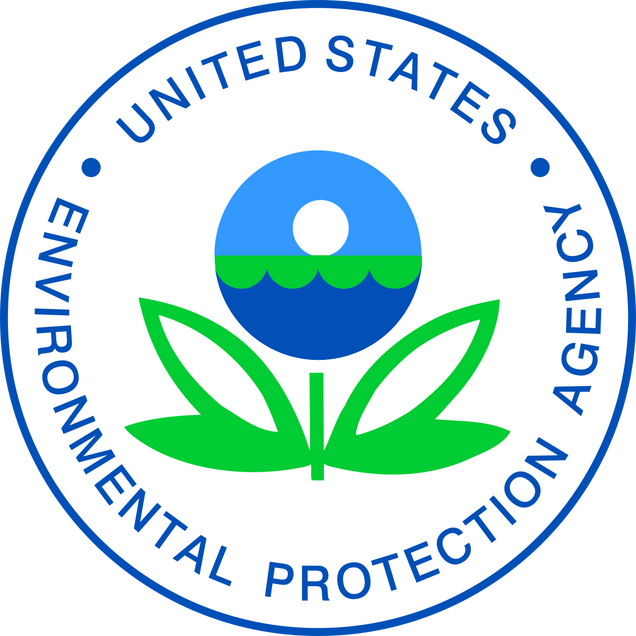 The California rule is set to take effect in 2024, but a waiver must be approved by the EPA beforehand. The EPA has never gone through a denial of a California waiver before, but that has not stopped the Trump Administration from trying to revoke previously granted waivers for zero emission passenger vehicle standards. The EPA is pursuing the revocation of California’s 2013 preemption waiver for greenhouse gas emissions and ZEV programs. This revocation is currently being challenged in court. If former President Trump won the 2020 election, the EPA may have tried to deny California’s zero emission truck regulations waiver. The EPA, however, would have faced an uphill battle because there is clear evidence that reducing emissions is necessary to help California achieve its CAA goals. California’s argument would have been bolstered by the recent wildfires that destroyed large swaths of the state. It was unlikely the EPA could have offered enough solid evidence to uphold their waiver denial. In addition, most legal experts agree that California, and the states that follow their regulations, had a strong case that the Trump Administration’s efforts were unlawful. Still, the changing balance on federal appeals courts and the Supreme Court could undermine California’s waiver process and spell the demise of the original purpose and intent of the CAA. For the time being, however, California and allied states continue to have a valuable tool to fight climate change and reduce emissions across the entire nation regardless of who controls the EPA.
The California rule is set to take effect in 2024, but a waiver must be approved by the EPA beforehand. The EPA has never gone through a denial of a California waiver before, but that has not stopped the Trump Administration from trying to revoke previously granted waivers for zero emission passenger vehicle standards. The EPA is pursuing the revocation of California’s 2013 preemption waiver for greenhouse gas emissions and ZEV programs. This revocation is currently being challenged in court. If former President Trump won the 2020 election, the EPA may have tried to deny California’s zero emission truck regulations waiver. The EPA, however, would have faced an uphill battle because there is clear evidence that reducing emissions is necessary to help California achieve its CAA goals. California’s argument would have been bolstered by the recent wildfires that destroyed large swaths of the state. It was unlikely the EPA could have offered enough solid evidence to uphold their waiver denial. In addition, most legal experts agree that California, and the states that follow their regulations, had a strong case that the Trump Administration’s efforts were unlawful. Still, the changing balance on federal appeals courts and the Supreme Court could undermine California’s waiver process and spell the demise of the original purpose and intent of the CAA. For the time being, however, California and allied states continue to have a valuable tool to fight climate change and reduce emissions across the entire nation regardless of who controls the EPA.
 Conner Kingsley anticipates graduating from Boston University School of Law in May 2021.
Conner Kingsley anticipates graduating from Boston University School of Law in May 2021.
Shifting Baselines are a Double-Edged Sword: Why Climate Advocates Must Honor Our Environmental Laws In Shaping Climate Policy
In his 1970 state of the union address, Richard Nixon said, “we still think of air as free. But clean air is not free, and neither is clean water. The price tag on pollution control is high. Through our years of past carelessness, we incurred a debt to nature, and now that debt is being called. The program I shall propose to Congress will be the most comprehensive and costly program in this field in America’s history.” President Nixon later signed bipartisan legislation establishing Environmental Protection Agency.
EPA efforts implementing laws such as the Clean Air Act and the Clean Water Act have greatly reduced pollution throughout the United States. Enforcement of the CAA has reduced aggregate national emissions of the six common pollutants by 73 percent. At the same time, gross domestic product grew by 324 percent. The CWA has had a rockier implementation – Flint Michigan still doesn’t have clean water – but has nevertheless had a significant impact on reducing water pollution.
United States. Enforcement of the CAA has reduced aggregate national emissions of the six common pollutants by 73 percent. At the same time, gross domestic product grew by 324 percent. The CWA has had a rockier implementation – Flint Michigan still doesn’t have clean water – but has nevertheless had a significant impact on reducing water pollution.
Unfortunately, Americans are already forgetting that clean air and clean water is not a guarantee or a constitutional right, due in part to the phenomenon known as shifting baseline syndrome. It suggests that something that was abnormal in the past, becomes the new normal, or baseline, for a generation of individuals, who then collectively forget the past baselines.
First explained in 1995, this cognitive theory has gained traction in the climate community to explain public antipathy towards action on climate change. It suggests that as average temperatures and associated climate effects slowly increase over time, individuals will fail to recognize the danger that the climate crisis poses, and collective action may fail to materialize as a result. Climate activists fear that no specific event will motivate action similar to the environmental crises in the 1970’s, and like a lobster in a pot of boiling water, we won’t realize what is happening until it is too late.
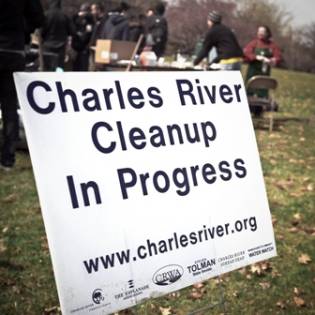 Shifting baselines, however, are not limited to present climate effects, but also work to undermine public support for current environmental laws and regulations that continue to reduce pollution in the present day. In 1995, for example, EPA embarked on an ambitious project to cure 400 years of environmental degradation and make the Charles River swimmable and fishable again, pursuant to its authority under the Clean Water Act. While those goals have not fully been achieved – EPA does not advise swimming on some days, and fishermen can only catch, then release fish – the monumental efforts have reduced source pollution from raw sewage flows and have led to a 99.5% reduction in source contributions to the river.
Shifting baselines, however, are not limited to present climate effects, but also work to undermine public support for current environmental laws and regulations that continue to reduce pollution in the present day. In 1995, for example, EPA embarked on an ambitious project to cure 400 years of environmental degradation and make the Charles River swimmable and fishable again, pursuant to its authority under the Clean Water Act. While those goals have not fully been achieved – EPA does not advise swimming on some days, and fishermen can only catch, then release fish – the monumental efforts have reduced source pollution from raw sewage flows and have led to a 99.5% reduction in source contributions to the river.
As a transplant to Boston, I was shocked to learn that the Charles has such a toxic history. And it is possible, if not probable, that an entire generation of Bostonians will grow up taking this privilege for granted. It may even be easy, based upon the unqualified success of the river cleanup, to forget the substantial sacrifices made and costs incurred in restoring the Charles.
This intergenerational failure to maintain understanding of past action in an environmental context may present a barrier to action on climate change. If the public discounts past costs to safeguard our water and air or the costs of maintaining environmental quality, the harder it will be to take new action. The public will not be ready to accept the significant costs required to tackle the climate crisis.
This is why it is imperative for climate advocates to not discount our existing environmental laws, but to actively celebrate their successes. It is incumbent on our present leaders and policymakers to stress how far we have come to clean the environment. They must frankly and openly discuss the means we took to get here. And they must stress that it is in our power to once again make the difficult decision to invest time, energy, and significant sums of money to clean our environment. We are not working from a blank slate in the climate fight.
Unfortunately, it seems that even our legislators pursuing climate action view climate solutions as separate and distinct from the long history of environmental action. For example, the Green New Deal discusses the World War II and New Deal mobilizations but fails to mention the bedrock environmental laws of the 1970s or the decades of subsequent pollution abatement.
We face severe environmental and public health challenges. We are not on track to keep global temperatures below 2 degrees Celsius. Sea level rise threatens our coasts. Ocean acidification will virtually eliminate all coral reefs and their priceless biodiversity and threaten coastal fishing communities’ livelihoods. It may be easy to abhor the cost of action, but we have not only known for fifty years of the cost of a clean, resilient, and sustainable environment, we accepted those sacrifices. It is time to embrace that history, rather than run from it.
 Joshua Williams anticipates graduating from Boston University School of Law in May 2021.
Joshua Williams anticipates graduating from Boston University School of Law in May 2021.


